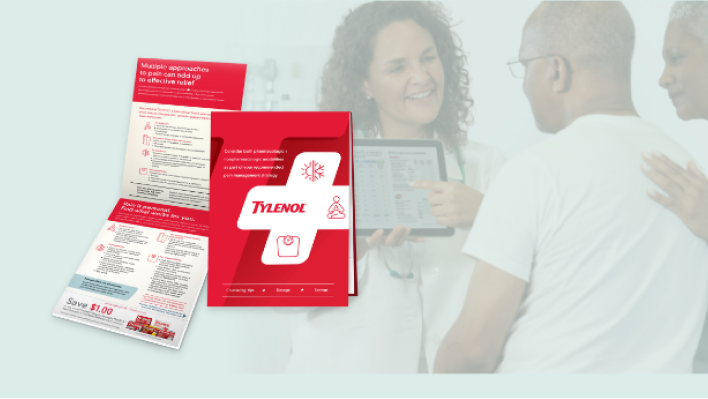Early to late adolescence
In addition to common conditions like cold, flu, and allergies, adolescents may experience pain associated with their changing bodies. TYLENOL® offers a range of products to provide relief.

Early adolescence: 11 to 15 years
Recommend Children’s TYLENOL® or TYLENOL® for patients 11 to 15 years of age, depending on weight
From ages 11 to 15 years the body continues to change significantly. Female patients may begin to experience period cramps. Sports-related injuries like muscle sprains may also be common during this stage.
Pediatric TYLENOL® and MOTRIN® pain relief formulations are appropriate analgesic considerations for patients through age 11 weighing up to 95 lbs. TYLENOL® Regular Strength, TYLENOL® Extra Strength, TYLENOL® 8-Hour Muscle Aches & Pain, and MOTRIN® IB offer effective pain relief options for patients 12 years and older.
Middle adolescence: 15 to 18 years
TYLENOL® offers a variety of pain relief formulations for patients 12 years and older, including multi-symptom TYLENOL® Cold + Flu
As children continue growing toward adulthood, they may experience many of the same common conditions as adults – headaches, sinusitis, cold, flu, and more. TYLENOL® provides effective formulations to relieve the pain and fever associated with these conditions.
Late adolescence: 18 to 22 years
TYLENOL® provides effective pain relief for common conditions associated with every stage of adolescence
As patients transition from the final stage of adolescence to adulthood, headaches, cold and flu, and sports injuries may be among the common conditions they experience. Recommend TYLENOL® and TYLENOL® Cold + Flu to provide effective relief of pain and fever associated with these and other common conditions.

Products and dosing
Find information and dosing charts for all TYLENOL® and MOTRIN® infants’ and
children’s products.

Infancy & childhood
Explore the benefits of TYLENOL® and MOTRIN® for patients 0 to 12 years and find tools and resources for parents and your practice.

Patient and practice resources
FREE downloadable educational materials and counseling tools.

FREE monthly BundleBoxes
FREE samples, resources, and coupons from 11 pediatric brands.
